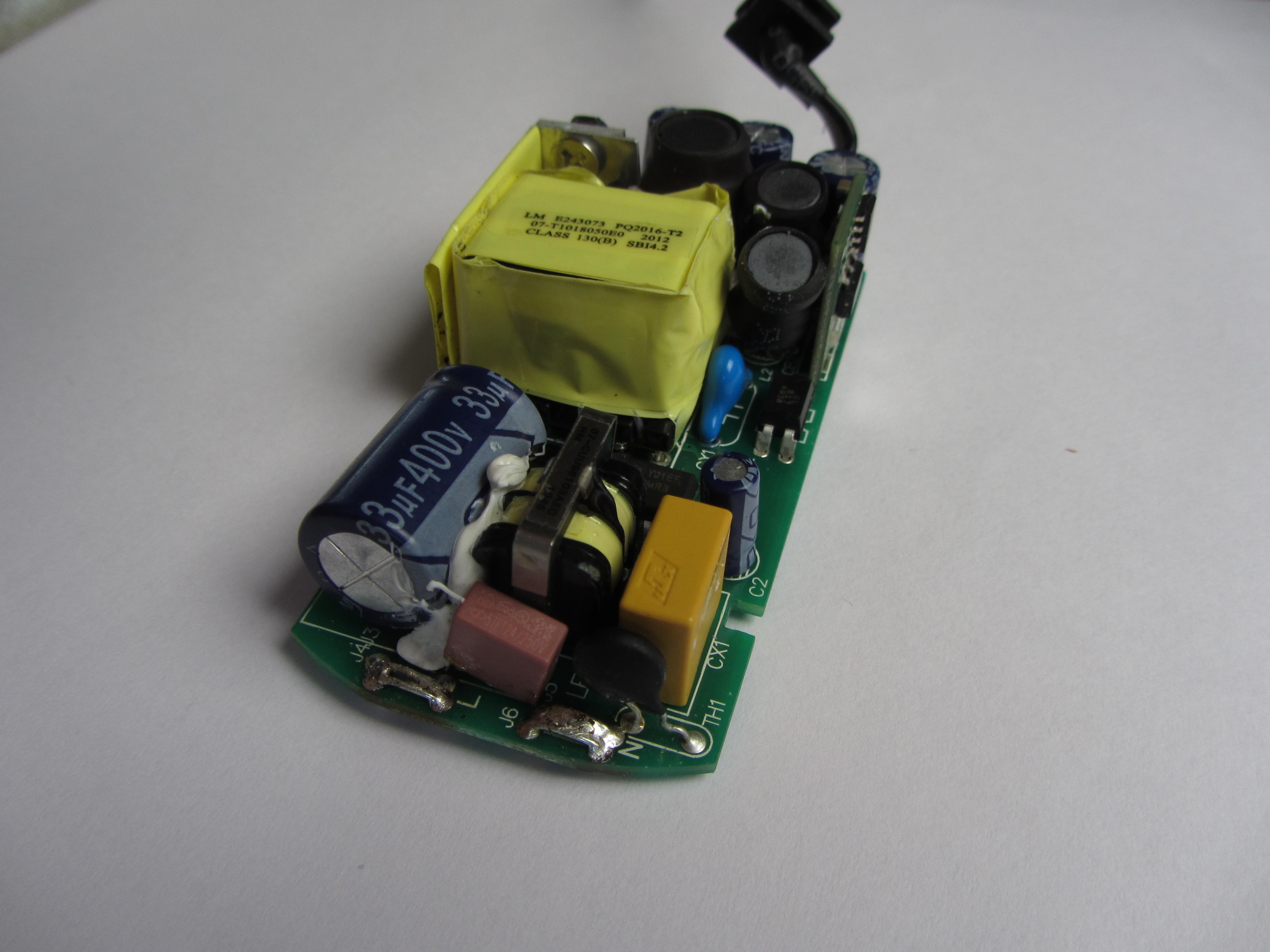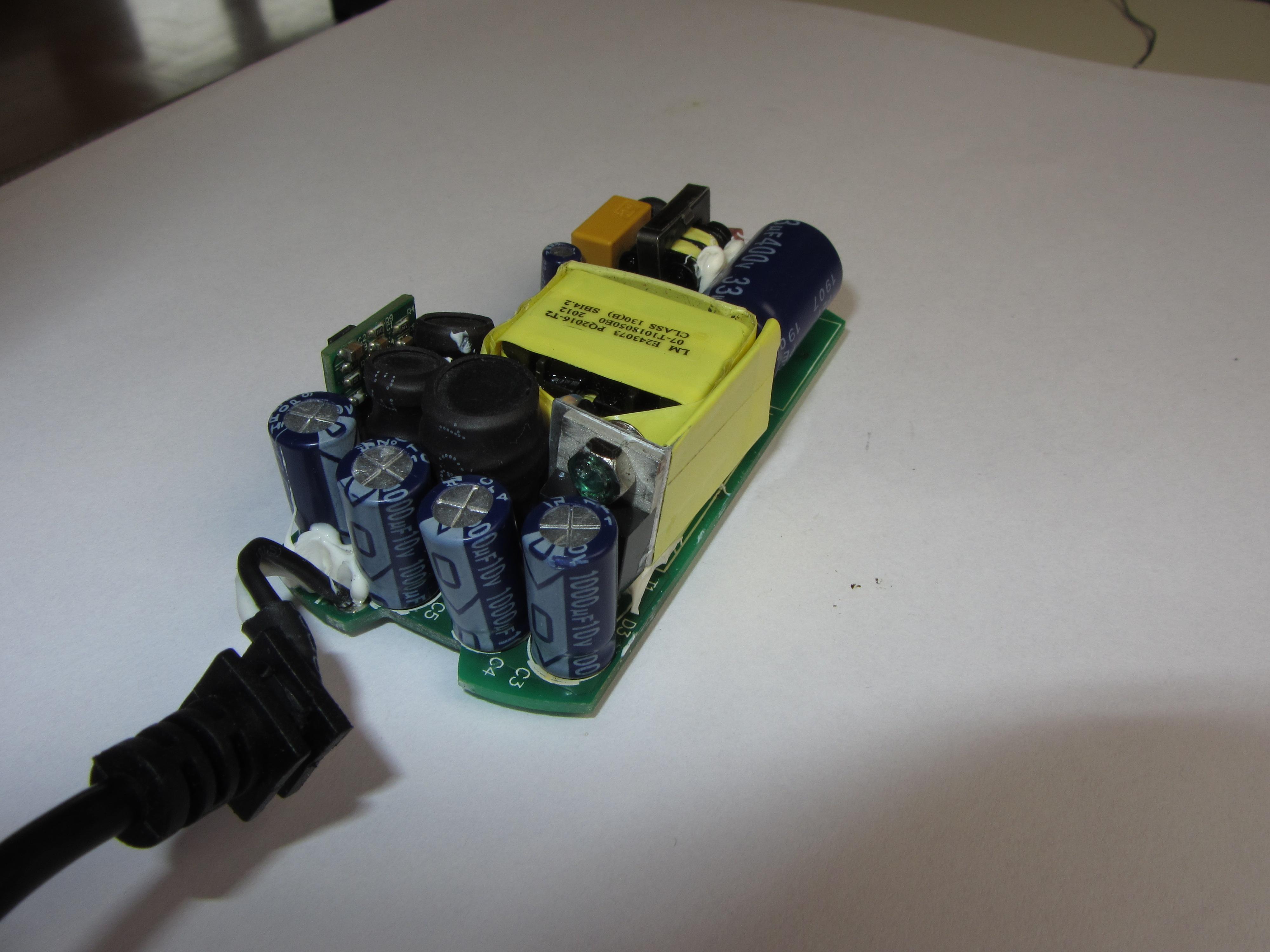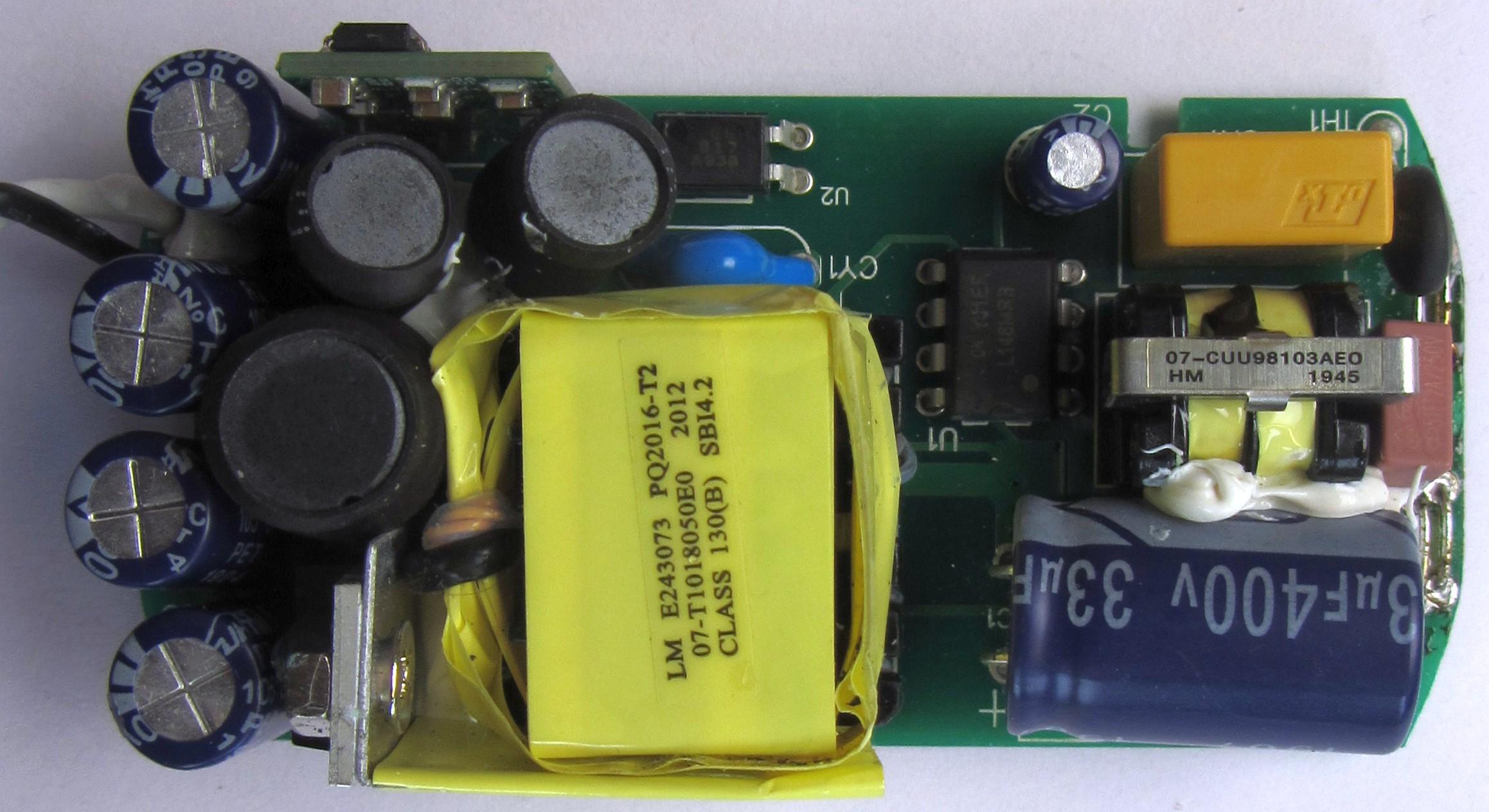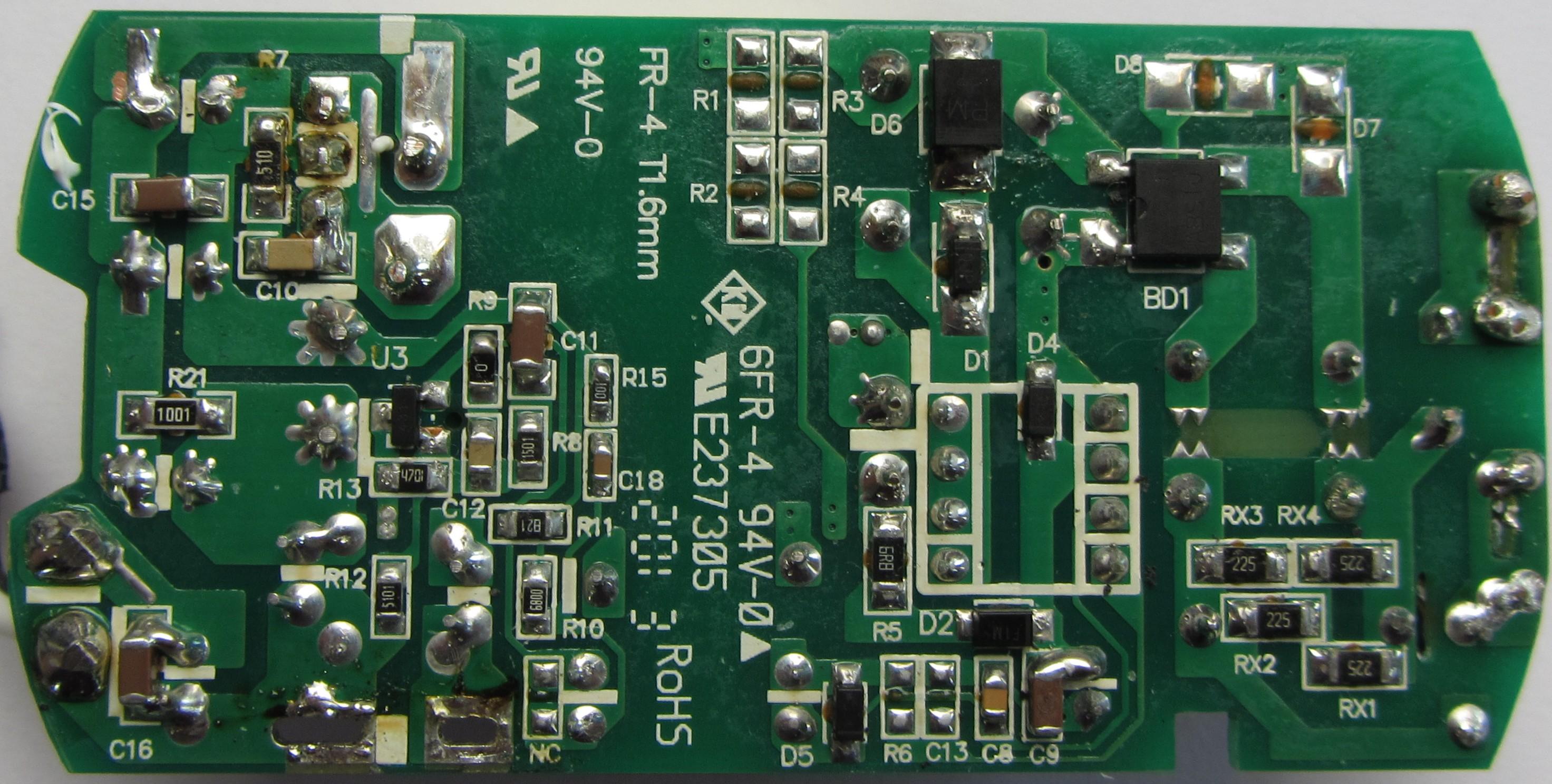At ~70USD the
ifi iPower is certainly expensive for a +5V 2.5A power supply, but does it deliver the ultra-quiet, ultra-clean audiophile-grade power it claims?
Short answer: Yes, probably.
Long answer: See below.
The iPower does deliver a supply with significantly less noise than others, and it does so out of the box. It is on the expensive side (or not for audiophile-grade device), but at least you are sure you won't hear a humming sound once plugged into your system (or your test/measuring equipement). It comes in the box with a fairly wide choice of wall adaptor and jack adaptor. Build quality is standard.


The supply has 2 PCBs, 1 main board and an additionnal board in parallel of the output. The main board is a flyback converter with a TL431 as reference. The second board has a BJT with an IC that I cannot recognised, marked "OV 1028" (no brand).


The circuit with the TL431 and the diode side of the optocoupler is quit strange.
The second PCB, with a ZT2907A BJT has most certainly something to do with noise-cancelling. The IC marked "OV 1028" is a mystery. An LT1028 could be a fit, but I don't understand pin 1, 8 and the negative feedback looks strange to me. Pin 8 is unconnected on the schema, as I couldn't find where it goes.
Following is a noise comparaison against a few USB +5V supply. A resistive load is used, measurements BW is 10Hz to 100kHz. The iPower has a very low noise, but it is hard to tell if the claimed noise floor of 1uV is reached.
IMO this power supply is pretty good, and at least for an audiophile product it tries to do what it claims. Still expensive, but if you have to test 5 differents supply before finding the one that has a low enough noise floor, you'll probably save money and time by buying this one.